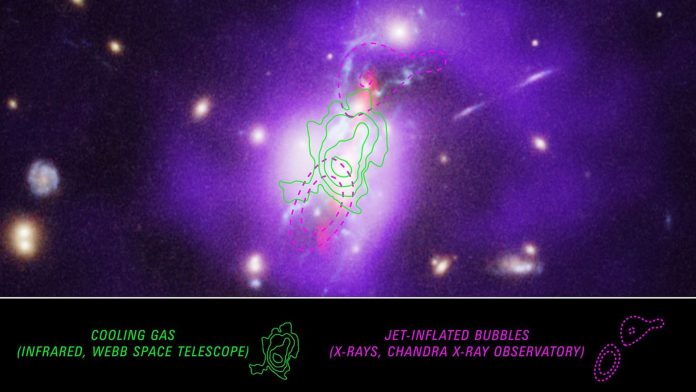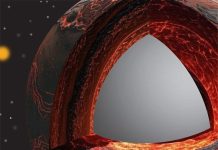NASA’s James Webb Space Telescope (JWST) has recently made observations about galaxy clusters that will help shape our understanding of them
In a study published in Nature, researchers have revealed the key to the Phoenix galaxy cluster’s unusually high rate of star formation, revealing new insights into the life cycles of galaxies.
New insights into the Phoenix galaxy cluster’s
Located 5.8 billion light-years from Earth, the Phoenix cluster is the largest ever observed.
At the heart of it is a massive galaxy with intense bursts of star creation that has always intrigued scientists. Usually, the central galaxy in these clusters is expected to be “red and dead,” having long stopped forming new stars.
However, the Phoenix cluster is an outlier, with its core pumping out stars at 1,000 new stars per year, much higher than most galaxies, which only form about one star annually. Scientists have always struggled to explain this activity.
Star formations in galaxies
In younger galaxies, star formation is fuelled by cold, dense clouds of gas. But it wasn’t clear how the central galaxy could still generate so much stellar fuel for older clusters like Phoenix, which are supposed to be past their prime in terms of star birth.
The breakthrough came when researchers, led by a team from MIT, turned to JWST’s advanced infrared capabilities. This powerful telescope allowed them to observe the Phoenix cluster in greater detail than ever before, revealing the presence of “warm” gas, a clue that explains the rapid star formation. For the first time, scientists could map regions of the core where gas was in an intermediate state between hot and cold.
Previously, astronomers had detected both extremely hot gas, at temperatures around 1 million degrees Fahrenheit, and extremely cold gas, at nearly absolute zero. However, no one had seen the “warm” gas phase between these extremes. This discovery is important because it indicates that the gas within the Phoenix cluster is undergoing extreme cooling, providing the necessary fuel for forming new stars. It suggests that the central galaxy is not relying on external gas from neighbouring galaxies but is generating its stellar material through a cooling process within its core.
JWST’s observations used a technique that tracked a specific neon emission at around 300,000 kelvins (540,000°F). This intermediate-temperature gas, detected throughout the central galaxy, provided evidence to confirm that cooling gas rather than external sources drive the Phoenix galaxy’s rapid star formation.
Understanding Phoenix cluster activity
The discovery has important implications for our understanding of galaxy clusters. In most cases, supermassive black holes at the centres of galaxies prevent gas from cooling enough to form stars. The black hole’s radiation and energetic particles typically heat the gas, making it harder for star formation to occur. In the Phoenix cluster, however, the cooling process seems to be occurring despite a black hole, suggesting that something unique is happening in this particular cluster.
This research provides insights into the complex processes governing star formation in galaxy clusters. While scientists now understand the Phoenix cluster’s starburst mechanism, the exact reasons for this extreme cooling remain a mystery. Future observations and studies will likely look deeper into this puzzle, helping astronomers better understand why this particular system behaves differently from other galaxy clusters.











